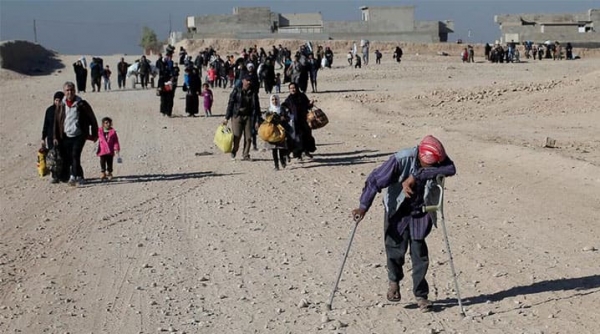According to the United Nations Office for the Coordination of Humanitarian Affairs (OCHA), more than one billion people worldwide are living with disabilities, with 16% of the latter being attributable to armed conflict. Not only every person living in the shadow of conflict is confronted with unimaginable threats, but people with disabilities rank high among those who are primarily affected by conflict. They are not physically able to flee conflict areas and many of them become a specific target of gross human rights and International Humanitarian Law (IHL) violations.
As a result of these considerations, the first episode of the “Disability and Armed Conflict” series aims to outline the major challenges that people with disabilities face when living in conflict, as well as the international legal framework established for their protection
To begin with, people with disabilities are subject to targeted killings and their “clustered settlements”, such as psychiatric institutions, orphanages and care homes, are frequently used as human shields. In addition, the risk of sexual and gender-based violence (SGBV) is even higher for women and girls with disabilities and it is used as a strategy, tactic or policy in war. As people with disabilities are not able to access evacuation procedures, they are more likely to be left behind. On top of this, access to their places of education or employment is further denied by the destruction of infrastructure and assistive devices which creates further physical barriers. People with disabilities are not even adequately represented or meaningfully consulted in the implementation of action by humanitarian organisations and mechanisms, nor by their own State.
Very little research on the topic of people with disability and armed conflict exists and the disability perspective is not fully incorporated in IHL training programmes. The same applies to United Nations (UN) mandated commissions of inquiry, which also fail to include an attentive analysis on disability in armed conflict.
Despite this general lack of appropriate consideration of the issue at stake, the international agenda has been moving towards a gradual and partial inclusion of the disability topic in the conflict setting. In light of this, the Convention on the Rights of Persons with Disabilities (CRPD) adopted in 2006, entering into force only in 2008, officially promotes the full and equal enjoyment of human rights by persons with disabilities. Nonetheless, armed conflict are specifically mentioned only in its preamble (“[…]observance of applicable human rights instruments [is] indispensable for the full protection of persons with disabilities, in particular during armed conflicts and foreign occupation”) and in article 12, which further urges States to ensure the protection and safety of persons with disabilities in situation of risks, including situations of armed conflict and humanitarian emergencies. As is evident, CRPD, differently from IHL, does not bind armed groups, but only States that are party to it, which are today 181.
Finally, the UN Security Council resolution 2475 issued in June 2019 became an additional instrument to address the protection and assistance needs of all affected civilian population, while emphasizing the necessity to consider the particular needs of persons with disability. Furthermore, due to the lack of relevant aggregated data available today, the resolution recognizes the need for timely data and information on the impact of armed conflict on them to better understand how to provide assistance to people with disability.
To know more, please read:
How law protects persons with disabilities in armed conflict
https://undocs.org/s/res/2475(2019)







